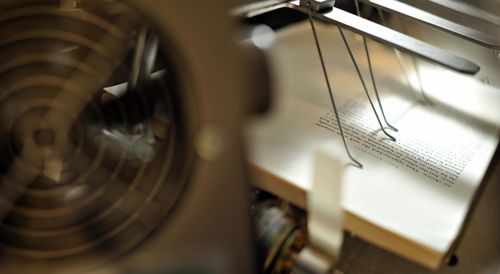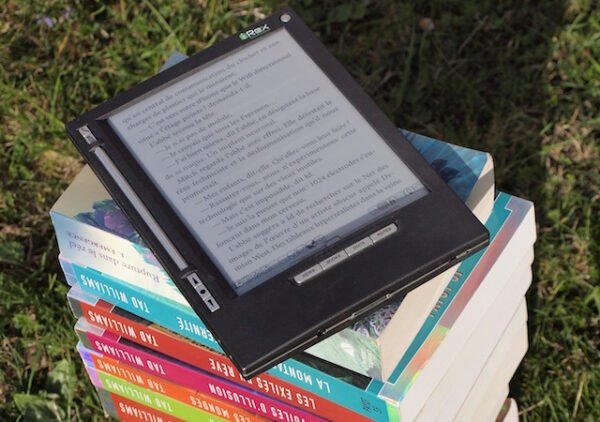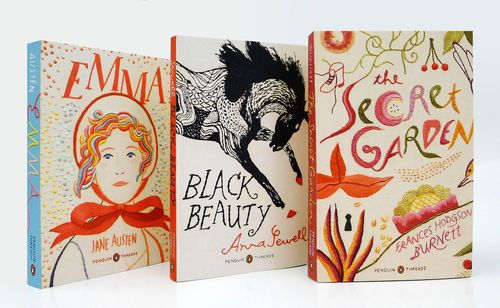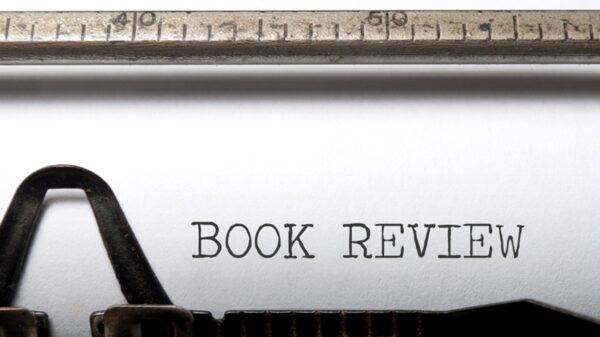
Book Printing Guide for Self-Publishers: From Manuscript to Printed Book

Self-publishing can be an enriching journey, but it requires careful planning and execution to ensure your manuscript transitions smoothly into a beautifully printed book. Proper planning and attention to detail are crucial in producing quality books, especially for self-publishers who handle many aspects of the project independently. This comprehensive guide will provide an essential checklist covering every step of the process, from finalising your manuscript to seeing your book in print.
Step 1: Finalising the Manuscript
The first crucial step in the book printing process is finalising your manuscript. This involves meticulous proofreading and editing to ensure your text is polished and error-free. Multiple rounds of editing are essential, as they allow you to catch and correct mistakes that might have been overlooked initially. Consider hiring a professional editor who can objectively review your work, offering insights on grammatical errors and narrative consistency. If hiring an editor is not within your budget, utilise grammar and spell-check tools such as Grammarly or ProWritingAid.
Once your manuscript is error-free, consistent formatting becomes the next priority. Proper formatting includes choosing appropriate font types and sizes, maintaining consistent line spacing, and ensuring uniform paragraph alignment. Software tools like Microsoft Word or Scrivener are excellent for maintaining consistency throughout your document. They offer various formatting options and templates that can simplify this process.

Step 2: Choosing a Printing Service
Research various printing companies and compare cost, print quality, turnaround time, and customer reviews. Cost is an important consideration but shouldn’t be the only factor. Find a balance between affordability and quality to ensure your book meets your required standard without breaking your budget.
Requesting print samples from different services can give you a sense of their work. Pay attention to the print’s clarity, the colours’ vibrancy, and the binding’s durability. These samples will help you make an informed decision about which service can best meet your expectations.
Print-on-Demand
Print-on-demand (POD) services, like Amazon KDP, offer significant benefits for self-publishers. With print-on-demand, your book is printed only when an order is placed, eliminating the need for large upfront investments in inventory. This model is cost-effective and reduces the risk of overprinting. Amazon KDP is a popular POD service because it integrates seamlessly with Amazon’s vast retail platform, providing easy access to a global audience.

Digital Book Printing
Digital book printing is a modern, versatile option perfect for short runs and custom orders. ImprintDigital, a high-quality book printer in the UK, excels in various book printing options. Digital printing does not require plates, which means it has a lower setup cost and is more suited for short runs, typically ranging from a few copies to several thousand. This method offers quick turnaround times and allows for easy customisation, making it ideal for self-publishers who may want to print small batches of their books to test the market or fulfil specific orders.

Litho Book Printing
Litho printing, or offset printing, is a traditional method known for its high-quality output and cost-efficiency in large print runs. Clays, a renowned printing company in the UK, specialises in litho printing and serves many major publishers. Litho printing involves creating plates, which are then used to transfer ink onto the paper. This method is ideal for large quantities, as the cost per unit decreases significantly with higher volumes.
Eco-Friendly Printing
Eco-friendly printing options are becoming increasingly popular as more authors and publishers seek to reduce their environmental impact. This approach involves using recycled paper, environmentally friendly inks, and sustainable printing practices. Recycled paper has improved significantly in quality and is now almost indistinguishable from non-recycled options.
Step 3: Formatting the Interior
The first step in this process is setting up the page layout for the book size you need. This involves determining the margin sizes, gutter space, and chapter headings. Margins should be wide enough to prevent text from being cut off during binding, while gutter space—the space between the binding and the text—should be adequate to ensure that the text isn’t lost in the fold.
Chapter headings must be consistent in style and placement to provide a seamless reading experience. Tools like Adobe InDesign are excellent for achieving professional results, offering precise control over layout and design elements however, it can be done in Microsoft Word. The main thing you want to focus on is a consistent design.
Choosing readable fonts and appropriate font sizes ensures your book is easy to read. For body text, serif fonts like Times New Roman or Garamond are often recommended because they are easier on the eyes for long text passages. Choose a complementary sans-serif font like Arial or Helvetica for headings to create contrast and highlight sections.
Ensure that all images are high resolution, ideally 300 DPI, to avoid pixelation in print. Images should be placed logically within the text, enhancing rather than distracting from the content. Captions should be clear and concise, providing necessary context without overwhelming the reader.
Step 4: Designing the Cover

The cover of your book is the first thing potential readers will see, and despite the adage “don’t judge a book by its cover,” the reality is that people often do just that. Therefore, it must be eye-catching and reflect the book’s content. A book cover’s essential elements include the front, spine, and back cover. The front cover should prominently feature the book’s title and author’s name, possibly accompanied by a compelling image or design. Getting the cover right is crucial because it creates the first impression and can significantly influence a reader’s decision to pick up your book.
Step 5: Proofreading the Final Print Version
Before committing to the final print run, you must order proof copies of your book. This step lets you catch any remaining errors and see how your book will look in print. Reviewing the proof copy involves thoroughly checking for typographical errors, formatting consistency, and print quality. Pay attention to margin alignment, image placement, and text clarity.
Use a checklist to review the proof copy methodically. Check for consistency in chapter headings, font sizes, and line spacing. Ensure that images are correctly placed and captions are clear. Verify that the cover design looks as expected and that the ISBN and barcode are correctly positioned.
Step 6: Preparing for the Main Production Run
Once your manuscript is finalised and all proofs have been reviewed, it’s time to prepare for the main production run. Confirm the timelines and delivery dates to ensure everything aligns with your planned release schedule. This coordination helps prevent any last-minute surprises and ensures your book will be printed and delivered on time.
If you didn’t get a digital proof copy before, now is the time. Carefully review the digital proof for any errors or issues. Check for consistency in formatting, correct placement of images and text, and overall quality. Once you are satisfied that the digital proof accurately represents your final vision for the book, give your final approval for the main print run. This approval is the green light for the printing service to begin production.
Step 7: Marketing and Distribution

Creating a marketing plan is the first step in ensuring your book reaches its intended audience. Start by identifying your target audience and setting clear marketing goals. Plan promotional activities such as book launches, readings, and signing events to generate excitement and interest in your book.
Leveraging social media platforms is a powerful way to promote your book. Use platforms like Facebook, Twitter, Instagram, and TikTok to reach a broader audience. Regular posts about your book, including behind-the-scenes content, excerpts, and updates, can help build anticipation and engage potential readers.
Online retailers like Amazon provide a vast platform for selling your book globally. Setting up your book on Amazon KDP can make it available in both print and digital formats. Local bookstores are another valuable distribution channel. Approach local bookstores to see if
they are willing to stock your book. Additionally, direct sales through a website should be considered. This allows you to build a direct relationship with your readers and retain a higher percentage of the sales revenue.
Additional Tips for Self-Publishers
Understanding ISBNs and barcodes is crucial for anyone serious about self-publishing. An ISBN, or International Standard Book Number, is a unique identifier for your book that facilitates its sale and distribution. Obtaining an ISBN is essential if you want your book to be available in bookstores, libraries, and online retailers. In the United States, ISBNs can be purchased from Bowker, while in the UK, they are available from Nielsen. Once you have your ISBN, you’ll also need a barcode containing your book’s ISBN and pricing information. Many printing services can generate a barcode for you or use online barcode generators. Placing the barcode on the back cover of your book is standard practice, ensuring it is easily scannable at points of sale.
The size of your book affects its cost, aesthetic appeal, and readability. Standard sizes for trade paperbacks are 5.5″ x 8.5″ and 6″ x 9″, while novels are often printed in smaller sizes such as 5″ x 8″. Each size has pros and cons, affecting your book’s overall look and feel. Paper type is equally significant; options range from cream or white paper for the interior to glossy or matte finishes for the cover. Cream paper is often preferred for fiction due to its readability, while white paper is commonly used for textbooks and non-fiction. Glossy covers can make colours pop, whereas matte covers offer a more subdued and sophisticated look.
Environmental considerations are becoming increasingly important in the publishing industry. Eco-friendly printing options, such as recycled paper and environmentally friendly inks, can reduce your book’s carbon footprint. Recycled paper has improved significantly in quality and is now almost indistinguishable from non-recycled options. Soy-based inks are a popular eco-friendly choice, as they are less environmentally harmful than traditional petroleum-based inks.
Remember the importance of thorough proofreading, consistent formatting, choosing the right book printing service, and carefully reviewing proofs before the final print run. The journey of self-publishing is challenging but incredibly fulfilling. By paying attention to detail and remaining committed to your project, you can produce a professional, high-quality book you can be proud of. Embrace the process, learn from each step, and look forward to the moment when you hold your printed book in your hands.
Written by Jamie Rand













































